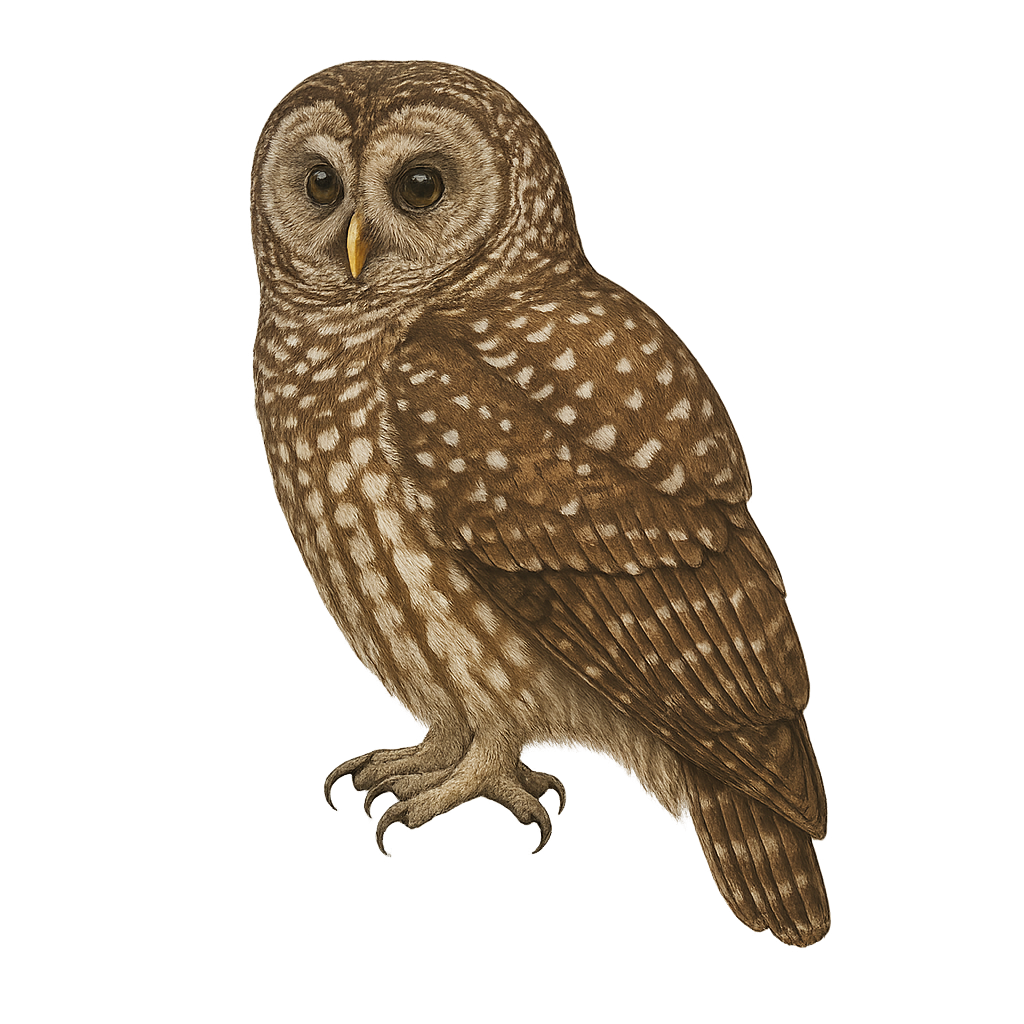Your wildlife photography guide.
Explore the northern spotted owl in detail, study its behavior, prepare your shots.
Where to observe and photograph the northern spotted owl in the wild
Learn where and when to spot the northern spotted owl in the wild, how to identify the species based on distinctive features, and what natural environments it inhabits. The WildlifePhotographer app offers tailored photography tips that reflect the northern spotted owl’s behavior, helping you capture better wildlife images. Explore the full species profile for key information including description, habitat, active periods, and approach techniques.
Northern Spotted Owl
Scientific name: Strix occidentalis caurina

IUCN Status: Threatened
Family: STRIGIDAE
Group: Birds
Sensitivity to human approach: Suspicious
Minimum approach distance: 30 m
Courtship display: February to April
Incubation: 28-32 jours
Hatchings: March to May
Habitat:
old-growth forests, coniferous forests
Activity period :
Mainly active at night, generally discreet during the day.
Identification and description:
The Northern Spotted Owl is a subspecies of the spotted owl, primarily found in the old-growth coniferous forests of the western coast of North America. It is medium-sized, with dark eyes and brown plumage speckled with white. This owl is a nocturnal predator, feeding mainly on small mammals. It is known for its reliance on mature forest habitats, making it vulnerable to deforestation. Due to habitat loss and competition with the barred owl, it is classified as a threatened species. Conservation of its natural habitats is crucial for its survival.
Recommended lens:
400 mm – adjust based on distance, desired framing (portrait or habitat), and approach conditions.
Photography tips:
To photograph the Northern Spotted Owl, it is essential to maintain a safe distance of at least 30 meters to avoid disturbing it. Use a telephoto lens of 400 mm or more to capture detailed images without getting too close. Prefer twilight or nighttime hours when the owl is active. Be patient and wait for it to perch on an open branch for a good viewing angle. Avoid using flash to prevent scaring it and disrupting its natural behavior.
The WildlifePhotographer App is coming soon!
Be the first to explore the best nature spots, track rutting seasons, log your observations, and observe more wildlife.
Already 1 430 wildlife lovers subscribed worldwide

